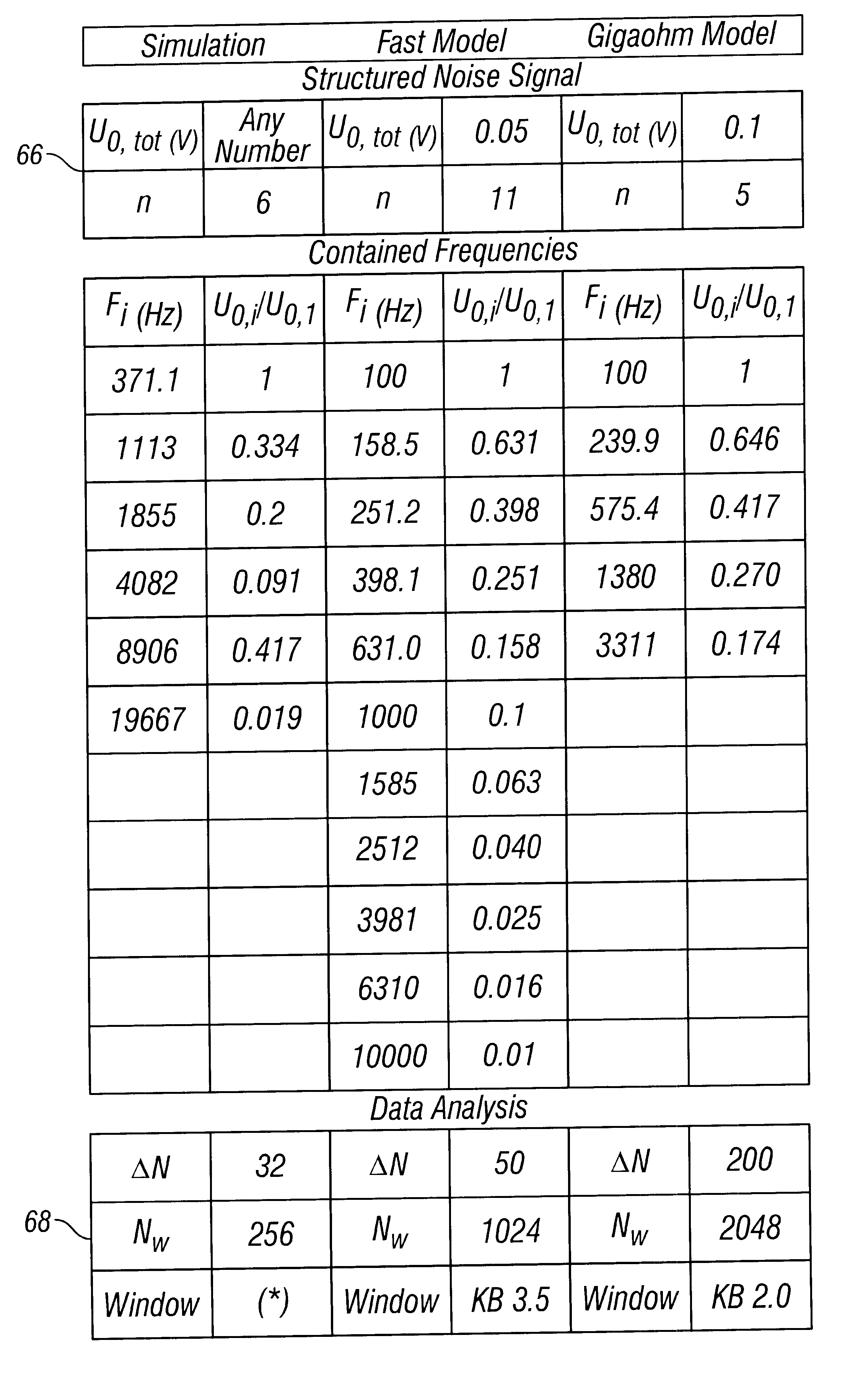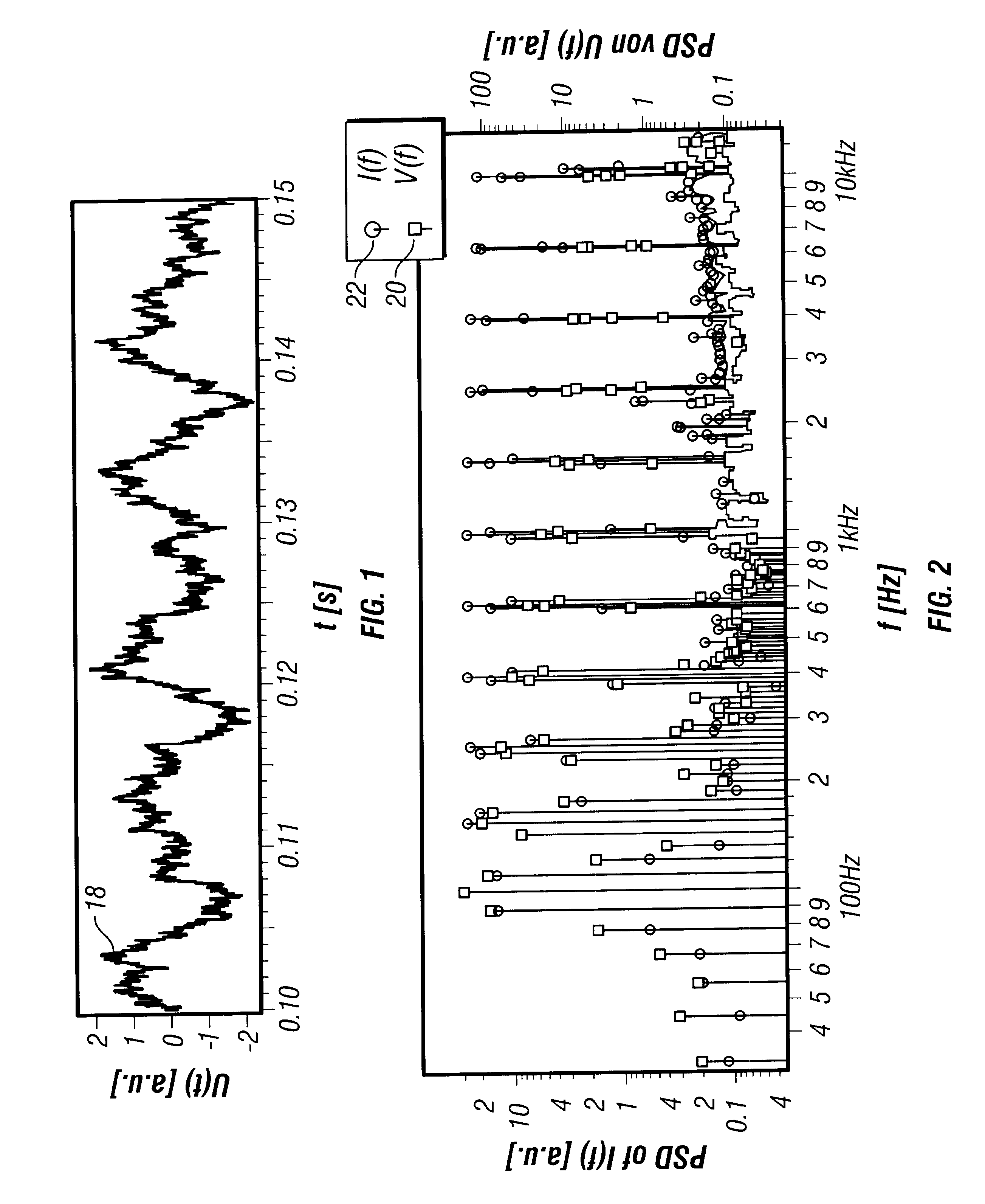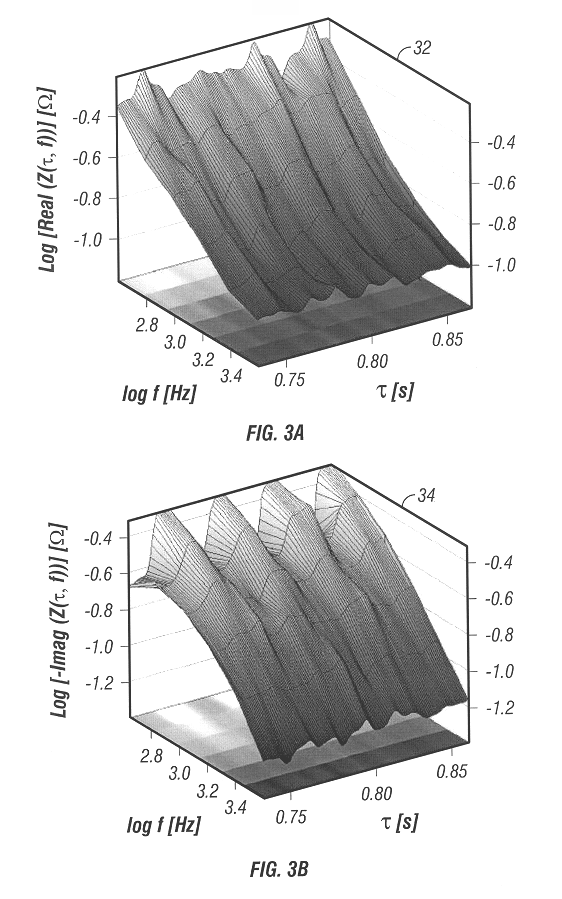Highly time resolved impedance spectroscopy
a technology of impedance spectroscopy and time resolution, applied in the direction of material impedance, resistance/reactance/impedence, instruments, etc., can solve the problems of inability to measure, limited impedance spectrum regarding bandwidth and frequency resolution, and non-stationary system electrical properties
- Summary
- Abstract
- Description
- Claims
- Application Information
AI Technical Summary
Problems solved by technology
Method used
Image
Examples
Embodiment Construction
One embodiment will be described in detail to assist in understanding various aspects of highly time resolved impedance spectroscopy. Although one embodiment is described in detail, highly time resolved impedance spectroscopy may be embodied in other specific forms without departing from its spirit or essential characteristics. The embodiment describes a scenario that would facilitate the measurement, or determination, of the impedance of individual ion channels in supported lipid membranes, biomembranes. In another embodiment, the impedance of natural or artificial, freely-suspended or substrated supported lipid membranes with or without ion channels may be measured. The substrates bear planar thin-film microelectrodes that are in multiple electrode arrangements, facilitating parallel and sequential multiplex measurements on the substrate. The substrates can be fabricated from, for example, silicon substrates with metal or semiconductor electrodes. The substrates may be mounted in ...
PUM
| Property | Measurement | Unit |
|---|---|---|
| frequency | aaaaa | aaaaa |
| frequencies | aaaaa | aaaaa |
| frequencies | aaaaa | aaaaa |
Abstract
Description
Claims
Application Information
 Login to View More
Login to View More - R&D
- Intellectual Property
- Life Sciences
- Materials
- Tech Scout
- Unparalleled Data Quality
- Higher Quality Content
- 60% Fewer Hallucinations
Browse by: Latest US Patents, China's latest patents, Technical Efficacy Thesaurus, Application Domain, Technology Topic, Popular Technical Reports.
© 2025 PatSnap. All rights reserved.Legal|Privacy policy|Modern Slavery Act Transparency Statement|Sitemap|About US| Contact US: help@patsnap.com



